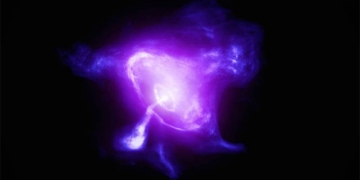In the frigid Arctic region, fires that were extinguished last year may reignite in the following spring. These are known as zombie fires.
Typically, the fire season in the far North begins only in June when the snow has melted and summer storms arrive. Therefore, scientist Sander Veraverbeke was puzzled to find signs of numerous fires in satellite images from Alaska and the Northwest Arctic in May 2016.
Veraverbeke, an Earth scientist at Vrije University in Amsterdam, Netherlands, reported that satellites captured images of “zombie fires”, which are the remnants of a large wildfire from the previous year. While humans believed they had managed to extinguish the fire, it quietly “survived” underground for an entire year, waiting through the winter to flare up once again.
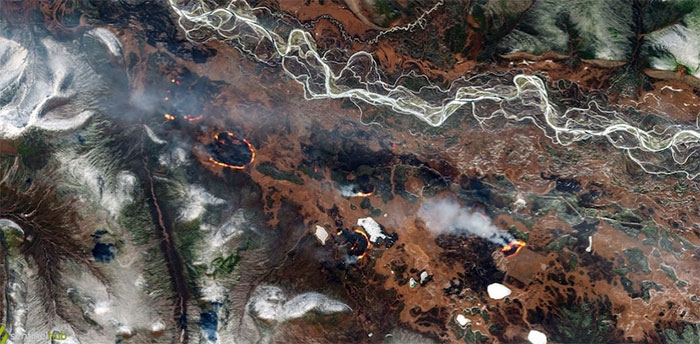
Zombie fires have flared up multiple times over the decades and are becoming increasingly common. (Photo: National Geographic).
These zombie fires have erupted several times over the decades and are showing a trend of increasing frequency. Veraverbeke’s research team discovered that their occurrence is closely linked to climate change. The increasingly hot and prolonged summers, combined with a series of large fires, are raising the likelihood of zombie fire production.
The rise of these “zombies” indicates that the Arctic is rapidly changing under the influence of climate, serving as a warning bell for more severe natural disasters in the future.
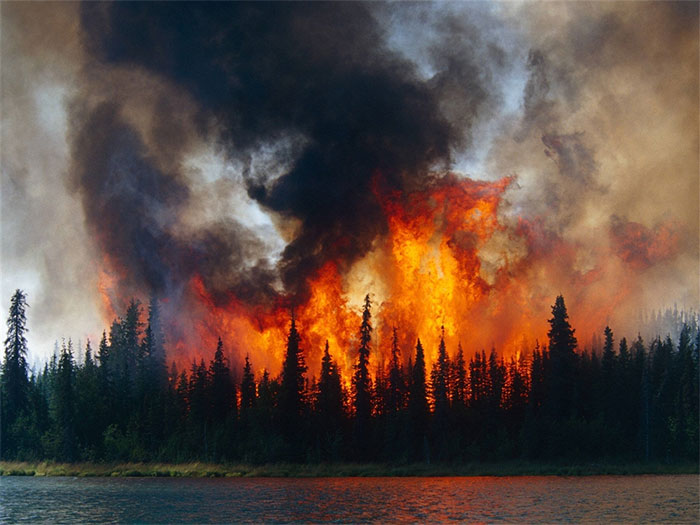
The increasingly hot and prolonged summers, along with a series of large fires, are raising the likelihood of zombie fire production. (Photo: Getty Images)
Hibernating in Peat
Approximately 16,187 km2 of the Arctic is covered by peat, which is estimated to store about 415 billion tons of carbon, equivalent to the total carbon found in all trees on Earth.
When summer arrives, fires ignited by lightning or human activity will burn directly on the surface of the peat.
“These are ancient soils. Pear in Siberia is actually very old,” said Jessica McCarty, a scientist specializing in the Arctic at Miami University, Ohio.
Once peat catches fire, it can provide an environment for smoldering flames underground for a long time after the surface fire has been extinguished. Flames sustained by peat can burn for days, weeks, months, or even years. When the right moment arrives, they can flare up again into a large fire, much like immortal zombies.
“Peat has everything that fire needs to sustain itself. The fire can burn quite intensely, enough to last through the winter. Essentially, they will ‘hibernate’ until the following spring when the snow melts and creates an opportunity for the fire to flare up on the surface,” said researcher Rebecca Scholten from VU Amsterdam.
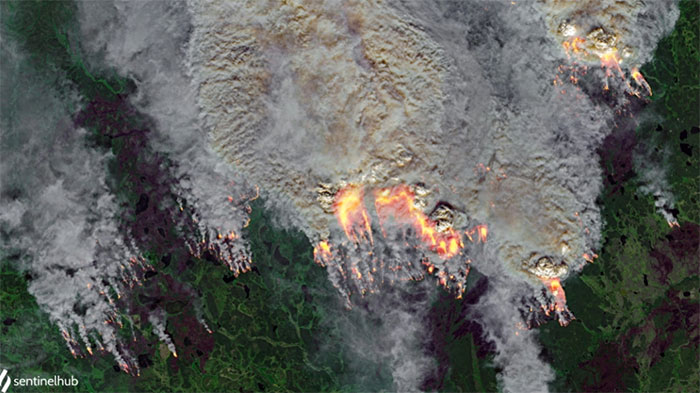
Once peat catches fire, it can provide an environment for smoldering flames underground for a long time. (Photo: Sentinel Hub)
What Makes Arctic Fires Different?
From 2000 to 2010, wildfires consumed more than 50% of the Arctic area each year. In the following decade, the annual burned area continued to increase, particularly in Alaska. Data shows that the frequency of wildfires in the Arctic today is the highest since the first forests formed in the region about 3,000 years ago, and it may even be the highest in the past 10,000 years.
Wildfires in the far North produce more carbon than places like California or Europe, as the underlying soil beneath high-latitude forests is often composed of ancient, carbon-rich peat. In 2020, Arctic fires released nearly 250 megatons of carbon dioxide, equivalent to about half the carbon emitted by humans in a year in Australia and approximately 2.5 times the record wildfire emissions in California in 2020.
Climate Change
Zombie fires have been known to experts for a long time. In 1941, a human-caused wildfire along a railroad in Alaska burned nearly everything within a 1,600 km2 radius. By May 1942, the fire “revived” and consumed an additional 1,200 km2.
However, scientists have not determined whether past zombie fires have been fully documented or if they occur more frequently as the Arctic climate warms rapidly. They believe the latter is highly likely.
“We will definitely see more of them (zombie fires), based on what I’ve observed over 30 years and discussions with other experts,” said Randi Jandt, a fire ecologist at the University of Alaska, Fairbanks.
Jandt cited the example of a massive wildfire that burned over 10,000 km2 in Alaska in 2019. Fire crews worked day and night to prevent the fire from spreading. But just when they thought the disaster had ended, the flames reignited the following spring, right after the snow melted.
“Just two days after observing an area completely covered in white snow, suddenly the fire erupted right there,” described Mark Parrington, a researcher at the Copernicus Atmosphere Monitoring Service, referring to the zombie fire in Alaska in 2020.
Parrington noted that the frequency of wildfires in recent years has significantly increased in Alaska, Siberia, and northern Canada.
“Previously, firefighting in the Arctic did not receive much attention because fires were rare, but that is changing rapidly,” said researcher Parrington.
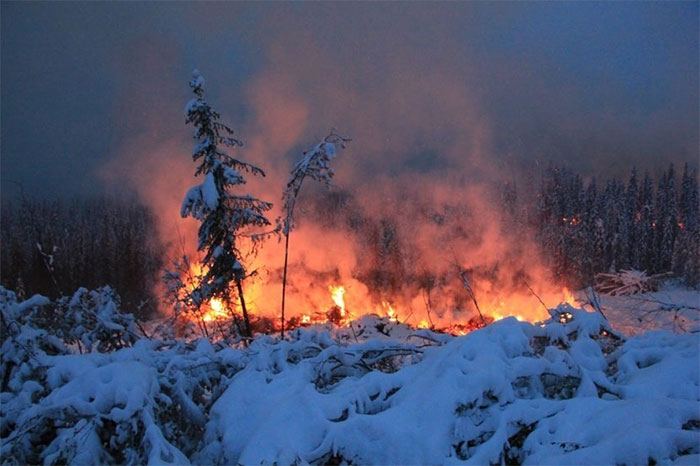
Wildfires in the far North produce more carbon than places like California or Europe. (Photo: Esquire Middle East)
Another concern is how many zombie fires are buried underground, waiting to create a new disaster.
Scientists say that underground fires in the peat layer develop very slowly, only about 100 times faster than hair growth, so it can be ruled out that fires from many years ago are still accumulating underground. Therefore, researchers are only studying wildfires from the past year.
However, the increasing severity of wildfires indicates that climate change is worsening the situation. Hot summers create large wildfires that can burn until late in the season, and the remnants of those fires are more likely to survive through the winter.
In the Northwest Arctic, zombie fires often flare up after every six hottest summers. In cooler summer years, no zombie fires survive the following winter.
“There is a clear relationship between zombie fires and high temperatures and the areas where wildfires occur. This relationship is likely to worsen in the future as climate change increases the likelihood of wildfires in the Arctic,” said scientist Scholten.


















































